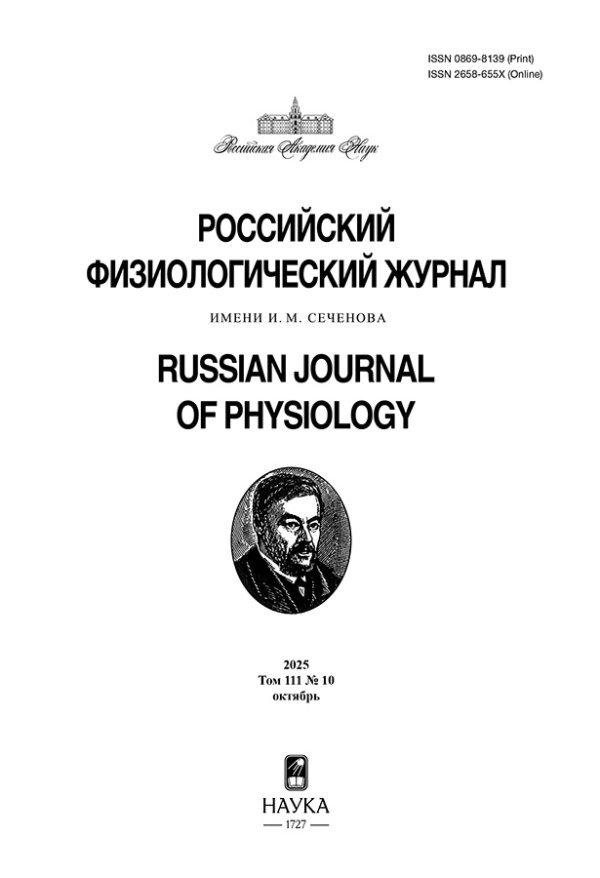Изучение роли мембранных рецепторов прогестерона в процессе беременности и родов у крыс
- Авторы: Водопетова М.А.1, Дмитриева А.Д.1, Левина И.С.2, Морозов И.А.3, Рубцов П.М.3, Смирнова О.В.1, Щелкунова Т.А.1
-
Учреждения:
- Московский государственный университет им. М.В. Ломоносова
- Институт органической химии им. Н.Д. Зелинского РАН
- Институт молекулярной биологии им. В.А. Энгельгардта РАН
- Выпуск: Том 111, № 6 (2025)
- Страницы: 847-864
- Раздел: ЭКСПЕРИМЕНТАЛЬНЫЕ СТАТЬИ
- URL: https://vietnamjournal.ru/0869-8139/article/view/687401
- DOI: https://doi.org/10.31857/S0869813925060028
- EDN: https://elibrary.ru/TFRKTK
- ID: 687401
Цитировать
Полный текст
Аннотация
Прогестерон выполняет главную роль в процессе подготовки женского организма к беременности и в ее сохранении. В женских репродуктивных органах обнаружены классические ядерные рецепторы прогестерона (nPRs), за счет взаимодействия с которыми прогестерон оказывает многочисленные эффекты в этих тканях. В последнее время обнаружены также мембранные рецепторы (mPRs) прогестерона в матке, плаценте, яичниках, молочных железах человека и животных. Предполагается, что эти рецепторы выполняют важные функции в сохранении беременности, в инициации родов. Однако их роль в этих процессах не изучена. Ранее нами были выявлены два соединения, имеющие сродство к mPRs разных подтипов, но при этом не взаимодействующие с nPRs. Их действие было продемонстрировано в различных клетках, но не было изучено in vivo. В настоящей работе главной целью было изучение действия одного из этих стероидов (LS-01) в классическом тесте на сохранение беременности у овариэктомированных самок крыс и на стимуляцию родового процесса для выявления роли mPRs. Для анализа главных мишеней действия селективного лиганда mPRs в матке была изучена экспрессия всех пяти подтипов mPRs, а также nPRs и мембранного компонента рецептора прогестерона (PGRMC1) до, в процессе и после окончания беременности. В результате проведенного исследования мы не выявили действия LS-01 ни на сохранение беременности, ни на стимуляцию родов у крыс. Однако изучение профиля экспрессии рецепторов прогестерона и корреляций этого профиля с концентрациями половых стероидов в сыворотке крови позволяет сделать предположение о разной роли подтипов мембранных рецепторов: прогестерон, действуя через mPRγ и nPRs, может способствовать сохранению беременности, а действуя через mPRβ, способствовать инициации родов. Для выявления функций разных подтипов mPRs в репродукции и тонкой регуляции этого процесса необходим поиск лигандов, селективных для каждого мембранного рецептора.
Полный текст
Об авторах
М. А. Водопетова
Московский государственный университет им. М.В. Ломоносова
Email: schelkunova-t@mail.ru
Россия, Москва
А. Д. Дмитриева
Московский государственный университет им. М.В. Ломоносова
Email: schelkunova-t@mail.ru
Россия, Москва
И. С. Левина
Институт органической химии им. Н.Д. Зелинского РАН
Email: schelkunova-t@mail.ru
Россия, Москва
И. А. Морозов
Институт молекулярной биологии им. В.А. Энгельгардта РАН
Email: schelkunova-t@mail.ru
Россия, Москва
П. М. Рубцов
Институт молекулярной биологии им. В.А. Энгельгардта РАН
Email: schelkunova-t@mail.ru
Россия, Москва
О. В. Смирнова
Московский государственный университет им. М.В. Ломоносова
Email: schelkunova-t@mail.ru
Россия, Москва
Т. А. Щелкунова
Московский государственный университет им. М.В. Ломоносова
Автор, ответственный за переписку.
Email: schelkunova-t@mail.ru
Россия, Москва
Список литературы
- Ali S, Balachandran K, O’Malley B (2020) Ninety years of progesterone: Тhe ‘other’ovarian hormone. J Mol Endocrinol 65: E1–E4. https://doi.org/10.1530/jme-20-0145
- Karteris E, Zervou S, Pang Y, Dong J, Hillhouse EW, Randeva HS, Thomas P (2006) Progesterone signaling in human myometrium through two novel membrane G protein-coupled receptors: Рotential role in functional progesterone withdrawal at term. Mol Endocrinol 20: 1519–1534. https://doi.org/10.1210/me.2005-0243
- Brown AG, Leite RS, Strauss JF (2004). Mechanisms underlying “functional” progesterone withdrawal at parturition. Ann N Y Acad Sci 1034: 36–49. https://doi.org/10.1196/annals.1335.004
- Langmia IM, Apalasamy YD, Omar SZ, Mohamed Z (2015) Progesterone Receptor (PGR) gene polymorphism is associated with susceptibility to preterm birth. BMC Med Genet 16: 63. https://doi.org/10.1186/s12881-015-0202-1
- Amini P, Michniuk D, Kuo K, Yi L, Skomorovska-Prokvolit Y, Peters GA, Tan H, Wang J, Malemud CJ, Mesiano S (2016) Human Parturition Involves Phosphorylation of Progesterone Receptor-A at Serine-345 in Myometrial Cells. Endocrinology 157: 4434–4445. https://doi.org/10.1210/en.2016-1654
- Mesiano S, Wang Y, Norwitz ER (2011) Progesterone receptors in the human pregnancy uterus: Do they hold the key to birth timing? Reprod Sci 18: 6–19. https://doi.org/10.1177/1933719110382922
- Condon JC, Jeyasuria P, Faust JM, Wilson JW, Mendelson CR (2003) A decline in the levels of progesterone receptor coactivators in the pregnant uterus at term may antagonize progesterone receptor function and contribute to the initiation of parturition. Proc Natl Acad Sci U S A 100: 9518–9523. https://doi.org/10.1073/pnas.1633616100
- Williams KC, Renthal NE, Condon JC, Gerard RD, Mendelson CR (2012) MicroRNA-200a serves a key role in the decline of progesterone receptor function leading to term and preterm labor. Proc Natl Acad Sci U S A 109: 7529–7534. https://doi.org/10.1073/pnas.1200650109
- Yoshida A, Yasuda K, Okada H (2024) Changes in the conflicting nongenomic effects of progesterone in rat myometrium during pregnancy. Life Sci 340: 122454. https://doi.org/10.1016/j.lfs.2024.122454
- Aluvihare VR, Kallikourdis M, Betz AG (2004) Regulatory T cells mediate maternal tolerance to the fetus. Nat Immunol 5: 266–271. https://doi.org/10.1038/ni1037
- Raghupathy R, Al-Mutawa E, Al-Azemi M, Makhseed M, Azizieh F, Szekeres-Bartho J (2009) Progesterone-induced blocking factor (PIBF) modulates cytokine production by lymphocytes from women with recurrent miscarriage or preterm delivery. J Reprod Immunol 80: 91–99. https://doi.org/10.1016/j.jri.2009.01.004
- Lim MK, Ku CW, Tan TC, Lee YHJ, Allen JC, Tan NS (2020) Characterisation of serum progesterone and progesterone-induced blocking factor (PIBF) levels across trimesters in healthy pregnant women. Sci Rep 10: 3840. https://doi.org/10.1038/s41598-020-59452-y
- Lu J, Reese J, Zhou Y, Hirsch E (2015) Progesterone-induced activation of membrane-bound progesterone receptors in murine macrophage cells. J. Endocrinol 224: 183–194. https://doi.org/10.1530/joe-14-0470
- Polikarpova AV, Levina IS, Sigai NV, Zavarzin IV, Morozov IA, Rubtsov PM, Guseva AA, Smirnova OV, Shchelkunova TA (2019) Immunomodulatory effects of progesterone and selective ligands of membrane progesterone receptors. Steroids 145: 5–18. https://doi.org/10.1016/j.steroids.2019.02.009
- Goncharov AI, Levina IS, Shliapina VL, Morozov IA, Rubtsov PM, Zavarzin IV, Smirnova OV, Shchelkunova TA (2021) Cytotoxic Effects of the Selective Ligands of Membrane Progesterone Receptors in Human Pancreatic Adenocarcinoma Cells BxPC3. Biochemistry (Moscow) 86: 1446–1460. https://doi.org/10.1134/S0006297921110080
- Shchelkunova TA, Levina IS, Morozov IA, Rubtsov PM, Goncharov AI, Kuznetsov YV, Zavarzin IV, Smirnova OV (2023) Effects of Progesterone and Selective Ligands of Membrane Progesterone Receptors in HepG2 Cells of Human Hepatocellular Carcinoma. Biochemistry (Mosc) 88: 1920–1932. https://doi.org/10.1134/S0006297923110202
- Levina IS, Kuznetsov YV, Schelkunova TA, Zavarzin IV (2021) Selective ligands of membrane progesterone receptors as a key to studying their biological functions in vitro and in vivo. J Steroid Biochem Mol Biol 207: 105827. https://doi.org/10.1016/j.jsbmb.2021.105827
- Kelder J, Pang Y, Dong J, Schaftenaar G, Thomas P (2022) Molecular modeling, mutational analysis and steroid specificity of the ligand binding pocket of mPRα (PAQR7): Shared ligand binding with AdipoR1 and its structural basis. J Steroid Biochem Mol. Biol 219: 106082. https://doi.org/10.1016/j.jsbmb.2022.106082
- Kumar N, Koide SS, Tsong Y-Y, Sundaram K (2000) Nestoronet: А progestin with a unique pharmacological profile. Steroids 65: 629–636. https://doi.org/10.1016/S0039-128X(00)00119-7
- Shynlova O, Mitchell JA, Tsampalieros A, Langille BL, Lye SJ (2004) Progesterone and gravidity differentially regulate expression of extracellular matrix components in the pregnant rat myometrium. Biol Reprod 70: 986–992. https://doi.org/10.1095/biolreprod.103.023648
- Chao T-C, Van Alten PJ, Greager JA, Walter RJ (1995) Steroid sex hormones regulate the release of tumor necrosis factor by macrophages. Cell Immunol 160: 43–49. https://doi.org/10.1016/0008-8749(95)80007-6
- Valadez-Cosmes P, Germán-Castelán L, González-Arenas A, Velasco-Velázquez M, Hansberg-Pastor V, Camacho-Arroyo I (2015) Expression and hormonal regulation of membrane progesterone receptors in human astrocytoma cells. J Steroid Biochem Mol Biol 154: 176–185. https://doi.org/10.1016/j.jsbmb.2015.08.006
- St-Louis I, Singh M, Brasseur K, Leblanc V, Parent S, Asselin E (2010) Expression of COX-1 and COX-2 in the endometrium of cyclic, pregnant and in a model of pseudopregnant rats and their regulation by sex steroids. Reprod Biol Endocrinol 8: 103. https://doi.org/10.1186/1477-7827-8-103
- Fernandes MS, Pierron V, Michalovich D, Astle S, Thornton S, Peltoketo H, Lam EW-F, Gellersen B, Huhtaniemi I, Allen J, Brosens JJ. (2005) Regulated expression of putative membrane progestin receptor homologues in human endometrium and gestational tissues. J Endocrinol 187: 89–101. https://doi.org/10.1677/joe.1.06242
Дополнительные файлы

















